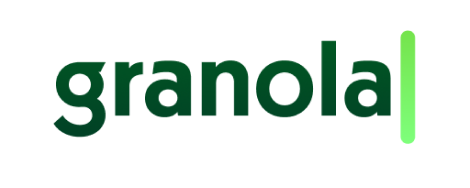Gone are the days of unresponsive ATMs and slow lines at brick-and-mortar banks. Today, millions prefer to fulfill their banking needs digitally, from what’s known as a neobank. Since 2017, financial services company Freecharge has been backed by Axis Bank, the third-largest private bank in India, and successfully launched its own neobanking platform in 2021. Now Freecharge empowers over 27 million users to do everything from pay utility bills and recharge their phones to invest in mutual funds and buy gold—all from the convenience of their digital devices.
Freecharge’s Chief Technology and Product Officer, Digital Business And Transformation (DBAT), Sanjay Jain, joined the company in December 2019 to scale a team of developers and help usher the company into the neobanking space. A collaboration between Freecharge and Axis Bank, the DBAT team’s core responsibility is to “transform both entities by building powerful technological solutions and platforms, including neo and digital products for millennials and Gen Z,” says Jain. “This gives us a big advantage ahead of other fintechs or startups.”
When Jain arrived, communication among teams was fragmented between a variety of channels, including WhatsApp, Google Meet, Hangouts and Microsoft Teams. Silos were common, and it was near impossible to find information in past conversations. “There are certain fundamental differences between Teams and Slack, and Teams just did not make sense for us,” he says. “I fought really hard for Slack.”
The secure channel-based messaging platform Slack enables Jain to streamline communication and align developers, design, product, project, data science and QA teams across Freecharge. Supported by a single collaboration hub, his teams ship quality code faster, improve service reliability, and stay engaged in an increasingly remote workplace.
“Our product didn’t exist in the market, so we built and scaled it. I started with three developers and my team now has 150,” Jain says, with plans to grow to 500 in the next few years. “From day one, we used Slack.”

“Our product didn’t exist in the market, so we built and scaled it. I started with three developers and my team now has 150, and growing. From day one, we used Slack.”
Resolving issues faster in Slack channels
Slack now serves as a digital headquarters for Freecharge, giving its teams the power to automate processes and resolve issues faster. Principal DevOps Engineer Rahul Kotian and his teammates rely heavily on Slack channels, virtual spaces to share messages, workplace automations, digital tools, and files. “On the #dbat-devops channel, we share crucial information with the team. It’s easier to ask questions, get someone’s attention when needed quickly, take a poll, whatever we need,” Kotian says.

“Everything is available in Slack. It’s reliable and has the best UI/UX.”
Before Slack, customer support alerts came in via email. Notifications could easily go unnoticed, and each issue was its own tangled headache that involved trying to find the right people and loop them into disparate email threads. Now everything integrates with Slack.
“When a developer raises a pull request, you can review and close it right in Slack,” says Principal DevOps Engineer Yuvraj Hole. “With the Jira integration, release tickets are generated in Slack to DevOps and our QA teams.” Instead of one person on an email thread, the entire channel has full visibility and can swarm the issue. If one person isn’t around or available, someone else can easily pick it up. “They know exactly how and when tickets are executed,” says Hole.
Freeing up developers to focus on the work, not the process
For standup and scrum meetings, Freecharge developers re-create the more informal, real-time conversations they used to have in person with huddles, which they can start instantly from any channel or direct message. “Instead of normal chatting, we go directly to a huddle,” Hole says. “We also use it for incident handling and management.”
By syncing their tools and communication in Slack, developers can speed up time to resolution and improve SLA performance. Plus, new responders who step in after the initial alert have instant access to historical context without interrupting ongoing investigations. “That’s the beauty of huddles: You can jump in with a single click and get everything resolved,” Kotian says. “They always save us a lot of time and effort. Otherwise, you have to find a link, wait, ask someone to admit you, and explain what’s going on.”

“Slack has the easiest integrations with every tool on the market. It’s so powerful for any company trying to collaborate with all the right stakeholders and team members.”
Scaling a positive, tech-savvy culture from anywhere
Like many companies, Freecharge previously relied on physical interactions in the office to drive engagement and build culture. “With the pandemic, we missed that fun, and communication and connection were a big concern,” Kotian says. “Slack is our main mediator right now, and plays a great role in helping us stay connected.”
This is especially true for the younger generation of developers rapidly joining the company. “It really matters for the newer employees, or what we call ‘techies,’ ” Kotian says. “Slack is an easy way for us to instantly show our culture.”
New employees are immediately invited to join the conversation. “The very first thing we do is get them into Slack,” Jain says. “They’re introduced in the #general channel, and people will post or react with their own emoji to welcome them,” Kotian says. “Emoji are a small integration with a big impact.”
Since Freecharge is a secure financial institution, HR can leverage channels to organize all the different points of access that each employee needs and maintain a high level of security. “We’re highly regulated, so as soon as employees are onboarded, Jain invites them to the #PMO channel to get them set up everywhere,” says Kotian.
Slack also gives every new employee instant access to the history of any channel they’re in. “If they want to check content, see what’s been done and discussed, what action has been taken, they have everything in Slack,” Kotian says. “Plus, they know exactly where to go if they need help.”
As Freecharge paves an innovative way forward in the neobanking space, it relies on Slack to build both a cutting-edge product and culture. “Slack saves so much time,” says Kotian. “It’s a must-have tool for anyone who wants to align their teams.”















